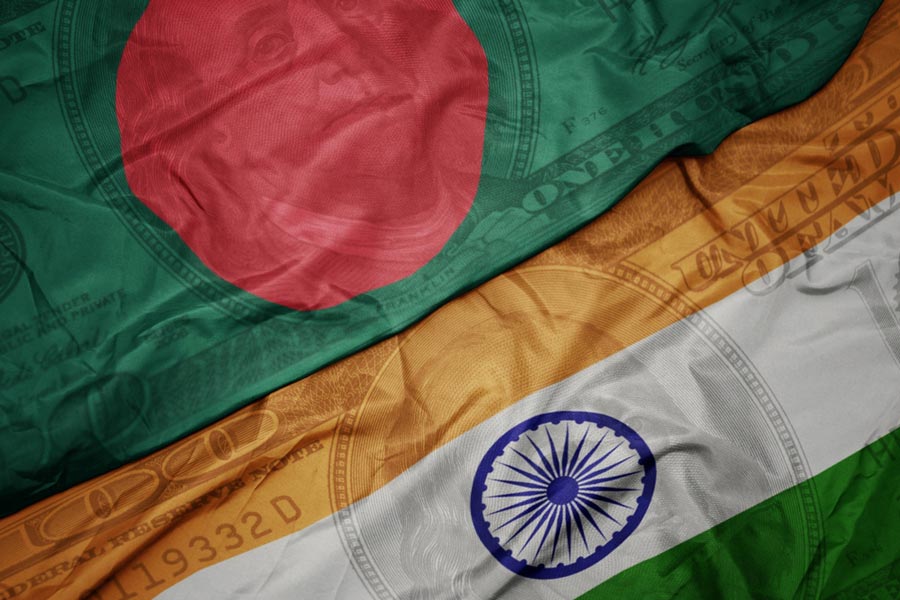Exporters of gems and jewellery, textiles, seafood and engineering products are expecting a near-term business hit after President Donald Trump unveiled a plan to impose a 27 per cent tariff on Indian imports.
The Gem and Jewellery Export Promotion Council (GJEPC) said in a statement on Thursday that the Trump administration’s announcement would significantly burden Indian exporters and American consumers alike.
“In the long term, we foresee a reshaping of global supply chains. In the short run, we anticipate challenges in sustaining India’s current export volume of $10 billion to the US market,” GJEPC said.
Cut and polished diamonds accounted for more than half of the exports and are likely to bear the biggest brunt of the tariff. The industry body has urged the government to make progress on the Bilateral Trade Agreement (BTA) between India and the US, as it would be “crucial in navigating the tariff issues” and securing long-term interest of the sector.
“Efforts should be made to rationalise import duty as well as balance trade with all major nations. Import duties help protect local industries, but the retaliatory tariffs will end up negating this step by most governments,” said Colin Shah, MD, Kama Jewellery.
The textile sector said that importers in the US are pushing for discounts and cancellations of orders, even as India is at a relative advantage compared with countries such as Bangladesh and Vietnam.
“The US importers have started asking for discounts and cancellations. This is a big issue for us, and this needs to be addressed by the government,” Sudhir Sekhri, chairman of the Apparel Export Promotion Council, told CNBC TV18.
“India competes globally for textile exports with countries such as Bangladesh, Vietnam, Cambodia, Sri Lanka, China and Pakistan. Compared with around 27 per cent tariff for Indian imports, these countries have been hit harder by US tariffs,” EY India partner and retail tax leader Paresh Parekh said.
“Higher tariffs are likely to be passed through to consumers to an extent, leading to an increase in the prices of end products, which could dampen the demand over the medium term,” said Gautam Shahi, director, Crisil Ratings.
The US imports around $10 billion of textiles and clothing from India. “The Indian textiles sector also hopes to secure further strategic advantage by including textiles in potential “zero for zero” India-US trade deal if it happens,” said Parekh.
Rudra Chatterjee, chairman of Obeetee, said that of the $2-billion carpet exports from India, $1.2 billion goes to the US. “Exports will be affected with a tariff that is far higher than margin and given 60 per cent of the cost is labour, employment will also be challenged. Hopefully, a bilateral treaty that brings tariff within a reasonable level can be effected soon,” he said.
The Automotive Component Manufacturers Association of India (ACMA) said it is keeping a close watch on the ongoing bilateral trade talks.
ACMA president, and CMD of Subros Ltd, Shradha Suri Marwah said autos and auto parts and steel and aluminium articles are already subject to Section 232 tariffs at 25 per cent announced earlier in an order on March 26 and are not covered in the latest order.
“The detailed list of auto components that will be subject to a 25 per cent import tariff in the US is, however, awaited,” she said.
India also exported seafood of around $2.55 billion to the US in FY24, out of which shrimps constitute roughly 92 per cent. India is the largest supplier of shrimps to the US. Closer home, over 60 per cent in value of the seafood exports from Bengal go to the US.
Indian exporters are staring at a 27 per cent tariff, while other competing countries, such as Ecuador (in South America), which is closer to the US, will have a 10 per cent duty.
“It is impossible for the seafood export sector if India and Bengal have to absorb this 27 per cent tariff, and the entire industry may collapse, leading to far-reaching consequences for the rural economy and coastal livelihoods. We have requested the commerce ministry to intervene urgently in this matter and take measures to support this sector till tariffs are brought down to previous levels or the conclusion of the bilateral trade agreement, whichever is earlier,” said Rajarshi Banerji, president (West Bengal), Seafood Exporters Association of India, and member of the Marine Products Export Development Authority under the Union commerce ministry.
Indian engineering industry exporters will also feel the impact of reciprocal tariff.
“Our preliminary estimate is that engineering goods exports to the US could drop by $4-5 billion in the first year. The exact impact on engineering exports to the US cannot be determined at present since it will depend on the ability of the American market to absorb these duties,” said Pankaj Chadha, chairman, EEPC India.











